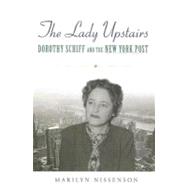
| Introduction | p. ix |
| The Apprenticeship | |
| "The Background" | p. 3 |
| Society Girl | p. 22 |
| Acquiring the Post | p. 49 |
| Media Adventures | p. 67 |
| Ted's Tenure | p. 81 |
| Taking Control | |
| Transition Time | p. 105 |
| Finding Her Way | p. 111 |
| The Fabulous Fifties | p. 138 |
| Charges and Countercharges | p. 151 |
| "I Got Married!" | p. 166 |
| The Liberal Agenda | |
| Party Politics | p. 181 |
| Protecting the Little Guy | p. 193 |
| Civil Rights and Wrongs | p. 206 |
| Bringing Down the Titans | p. 216 |
| Ethnic Journalism | p. 227 |
| Sunny Days | |
| Alone Again | p. 241 |
| Changing the Guard | p. 253 |
| "The Only Survivor" | p. 272 |
| Planning for the Future | p. 289 |
| Clouds on the Horizon | |
| The Rise of the New Left | p. 305 |
| Blacks vs. Jews | p. 323 |
| The Candy Store | p. 338 |
| The Young Turks | p. 350 |
| The Worst of Times | p. 369 |
| Resolution | |
| The Man from Oz | p. 389 |
| Thereafter | p. 414 |
| Notes | p. 443 |
| Bibliography | p. 479 |
| Acknowledgments | p. 485 |
| Index | p. 489 |
| Table of Contents provided by Ingram. All Rights Reserved. |
The New copy of this book will include any supplemental materials advertised. Please check the title of the book to determine if it should include any access cards, study guides, lab manuals, CDs, etc.
The Used, Rental and eBook copies of this book are not guaranteed to include any supplemental materials. Typically, only the book itself is included. This is true even if the title states it includes any access cards, study guides, lab manuals, CDs, etc.
Excerpted from The Lady Upstairs: Dorothy Schiff and the New York Post by Marilyn Nissenson
All rights reserved by the original copyright owners. Excerpts are provided for display purposes only and may not be reproduced, reprinted or distributed without the written permission of the publisher.